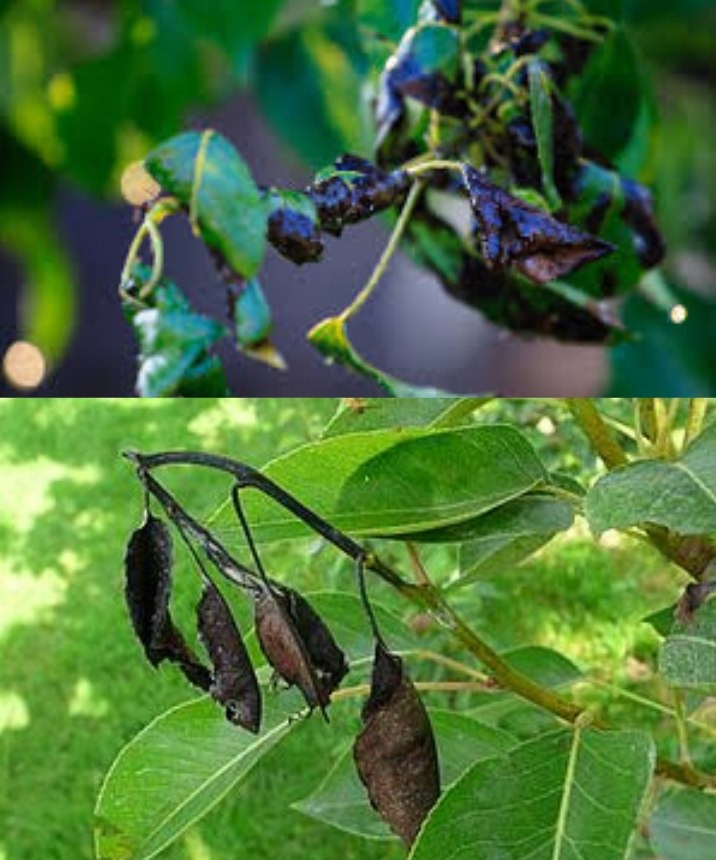Fire blight is a serious bacterial disease that affects certain plants in the Rosaceae family, such as apple trees, pear trees, quinces, and cotoneasters. It’s important to recognize the symptoms, take prompt action to control the spread of the disease, and apply effective prevention practices. Here’s more information about fire blight:
Symptoms of Fire Blight Wilted Branches and Shoots: One of the early symptoms of fire blight is the sudden wilting of branches and shoots, which take on a burnt or scorched appearance. These shoots may hang from the plant as if they were burned. Exudation of Sap: Affected areas may exude a brown or dark red sap. This sap can have an unpleasant, sticky odor. Formation of Cankers: Lesions resembling sores, known as cankers, can form on infected branches and trunks. These lesions are sunken and may have a watery or necrotic appearance. Darkened Rhizomes: In perennial plants like cotoneaster, infected rhizomes can become darkened and exhibit a wet decay.
Treatment of Fire Blight Pruning Infected Branches: Pruning infected branches is the most effective way to control fire blight. Remove infected branches at least 15-30 cm below the visible lesion. Disinfect pruning tools between cuts to prevent disease spread. Antibiotic Treatment: In severe cases, bacterial antibiotics can be used to treat affected plants. However, this approach is costly and not always effective, so it’s generally reserved for high-value commercial plants.
Prevention of Fire Blight Selection of Resistant Varieties: When choosing plants for your garden, opt for varieties known for their resistance to fire blight. Good Air Circulation: Promote good air circulation by planting and spacing plants properly. This helps reduce moisture and prevent disease spread. Avoid Overfertilization: Overfertilization can stimulate excessive, tender growth, making plants more susceptible to diseases like fire blight. Tool Disinfection: Regularly disinfect your gardening tools to prevent the spread of bacteria and other diseases.
By recognizing the symptoms of fire blight, taking appropriate control measures, and applying preventive practices, you can protect your plants from this devastating disease. Keep a watchful eye on your garden and act promptly to keep it healthy and thriving!
